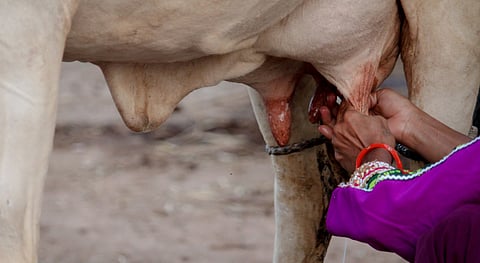WAAW 2024: Lack of community engagement is a major shortcoming of the AMR business model
Antimicrobial resistance (AMR) has emerged as an urgent global health concern. The World Health Organization (WHO) embarked the Global Action Plan (GAP) on AMR in 2015 and since then, many partners have collaborated. This comprehensive framework aimed to guide the signatory countries in developing locally feasible strategies in tackling AMR. The strategic priorities of GAP AMR included improving knowledge and awareness, reducing infection risks, optimising antibiotic use, increasing AMR surveillance, and securing sustainable investment for treatment and research. On the template of GAP AMR, India launched its National Action Plan on Antimicrobial Resistance (NAP-AMR) in 2017. India as a country, has advocated for multi-sectoral approaches involving human and animal health, agriculture and environmental sectors with a closely knit collaboration between healthcare workers, regulatory bodies and industrial partners. These NAP AMR strategies were tailored to India’s unique healthcare landscape, addressing the widespread issues of antibiotic misuse, easy access to over-the-counter antibiotics, and limited awareness among the public.
Though GAP AMR and NAP AMR established broader goals, effective implementation at the grassroots level is the major challenge. Even after seven years of launch of NAP AMR, only four states have developed their state action plans which clearly demonstrate the lack of political commitment and willingness of attitude by enlarge. State action plans align with the objectives of the NAP AMR, specifically targeting healthcare professionals, institutions, policymakers and governing bodies. However, several factors contribute to its limited success.
Among many other shortcomings, lack of community engagement is the fulcrum of this not-so-popular movement, particularly in rural and underserved areas. It is an unfortunate paradox that AMR momentum is least advocated where antibiotic usage is most, because of limited financial resources, inadequate infrastructure, and insufficient monitoring. These barriers hinder the implemention of AMR education and antibiotic stewardship on a broad scale. This lack of community-inclusive programs creates a perception that AMR is an issue primarily of the middle class and elite population in urban areas and cities. Community engagement is essential in the AMR movement because public behaviour and knowledge directly impact antibiotic consumption patterns. Community consumers with limited AMR literacy are the most important unaddressed stakeholders. Engaging communities in AMR education will empower more individuals for informed decisions and mitigating AMR.
AMR awareness campaigns should move out to community settings of various socioeconomic strata. Tailored geopolitical campaigns with due consideration of socio-cultural issues will bring out a paradigm shift in the AMR momentum. Simple and relatable messages distributed through community health workers, local events, social media, schools, police stations, traffic signals and railway stations can significantly increase community AMR literacy. More community leaders, schoolteachers, priests and motivational speakers have to be roped in along with healthcare providers, fostering trust and responsibility among the common public.
At this point, it appears that while AMR advocacy is well-presented and well accepted, especially among the educated white collared classes in urban areas, there is still a long way to travel to even create an impact among consumers in rural India. In absence of AMR literacy among the community consumers of urban and rural India, there is an absolute dearth of demand of the AMR campaign. As a successful business model, the demand of community AMR campaign has to be created before the supply of various mitigating strategies to its consumers.
Sagar Khadanga is Associate Professor, Department of General Medicine, AIIMS Bhopal, N.O. Technical Committee MPSAPCAR
Shweta Kumar is Lecturer, Department of Pharmacy, S.V. Polytechnic College, Bhopal
Views expressed are the authors’ own and don’t necessarily reflect those of Down To Earth


